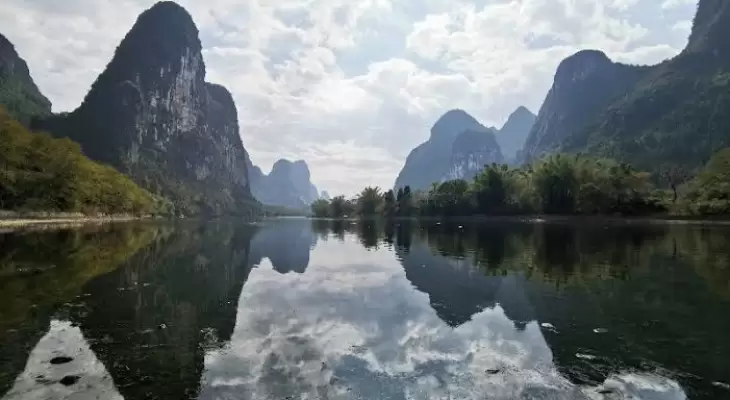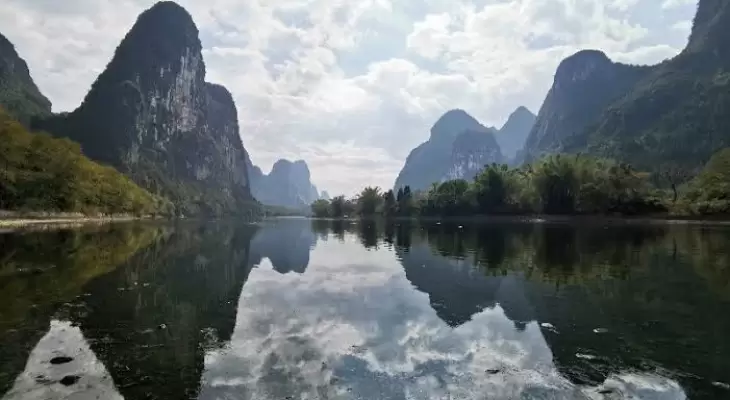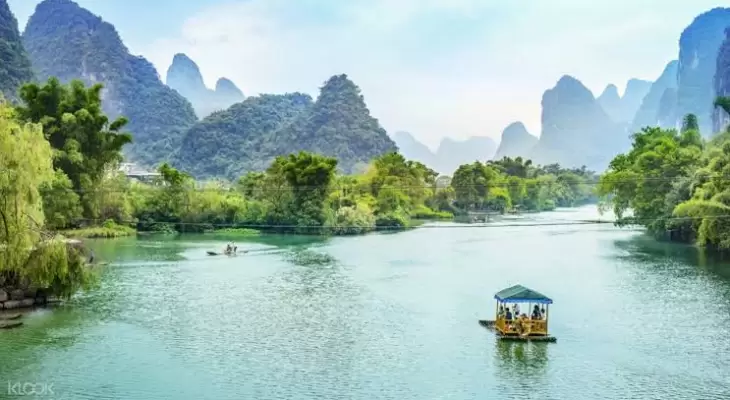The Li River, a Place In China

Holiday Ayo - The Li River or Li Jiang which belongs to the Xijiang River system in the Pearl River Basin, is a generic term for the tributary of the upper reaches of the Guijiang River and is located in the northeastern part of the Guangxi Zhuang Autonomous Region, China. It flows 215 kilometres (134 mi) from Xi'an County to Pingle County, where the karst mountains and river sights highlight the famous Li River cruise.

The Li River originates in Mao's Mountains in [[Xing'an County]] and flows in the general southern direction through Guilin, Yangshuo and Pingle. In Pingle the Li River merges with the Lipu River and the Gongcheng River and continues south as the Gui River, which falls into the Xi Jiang, the western tributary of the Pearl River, in Wuzhou.
The upper course of the Li River is connected by the ancient Lingqu Canal with the Xiang River, which flows north into the Yangtze; this in the past made the Li and Gui rivers part of a highly important waterway connecting the Yangtze Valley with the Pearl River Delta.

The 439-kilometer (273 mi) course of the Li and Gui Rivers is flanked by green hills. Cormorant fishing is often associated with the Lijiang (see bird intelligence).
Li River cruises from Guilin to Yangshuo are famous, attracting millions of visitors a year.
The Li River and tributaries drain the area from Guilin to Yangshuo, descending from 141 m at Guilin to 103 m at Yangshuo. Mean flow past Guilin is 215 cubic metres per second, and alluvium sediments consisting of well-sorted gravels covered by silty sand, form floodplains and terraces along its route. Yet, it is the 2,600 m of Devonian and Carboniferous limestones and karst terrain within the Guilin Basin, that gives the area a dramatic landscape. Two distinctive types of karst are found, Fengcong, and Fenglin, which have evolved for the past 10-20 million years, within the Cenozoic.

Fengcong karst dominates the course of the Li River and is defined as a group of limestone hills with a common limestone base, with deep depressions or lines between the peaks, and sometimes described as peak cluster depression karst. Hundreds of caves are present in this terrain, with 23 having passages longer than 1 km alongside the Li River gorge. The longest is the Guanyin Cave System that extends from Caoping to Nanxu.








Leave a comment